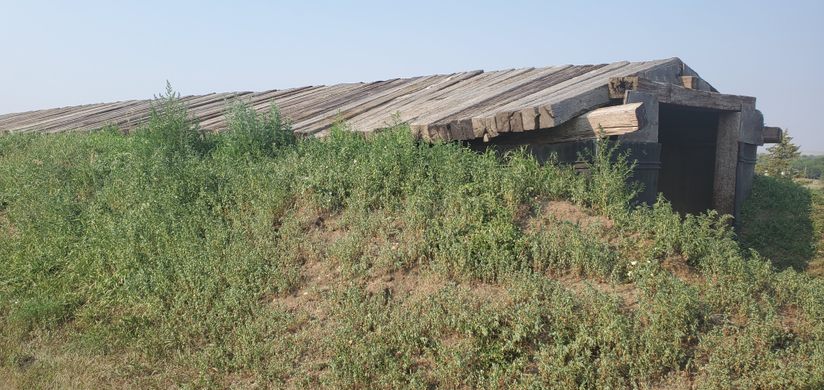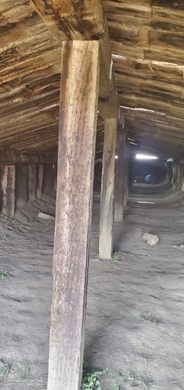AO Edited
Fort Sauerkraut
A replica of a fort built from a frontier town's mass hysteria in the face of false reports of impending Native American violence.
In late November 1890, the town of Hebron, North Dakota, was not yet a decade old, and yet it was seized by fear. Rumors had been spreading across that a group of hostile Lakota people had fled the Standing Rock Reservation to the south and were attacking towns on their way north.
After Lakota leader Tatanka Iyotaka, often known as Sitting Bull, surrendered at Fort Buford in 1875, Indigenous tribes in the Dakotas were confined to reservations with poor land and little wild game. Though the government promised to send rations, what little supplies that arrived were often poor quality. By the 1890s, widespread starvation and disease were common on reservations. Around this time, a Northern Paiute spiritual leader named Wovoka started preaching about the Ghost Dance, a movement that aimed to restore a connection between Indigenous people between their heritage and native lands. Though the movement was largely peaceful, it was widely misinterpreted as a call to violence against white settlers.
When the mostly German homesteaders who lived in Hebron received telegram warnings of an impending attack, they were gripped with terror. They sent women and children to Bismarck while rushing to build a fort to protect themselves. Without lumber and arms, they built a makeshift shelter on the tallest hilltop, using sod for walls and railroad ties for a roof, and sheltered in place. The fort was over 100 feet long, seven feet high, and stocked with kegs of sauerkraut, the perfect condiment for creeping dread.
For weeks on end, they stayed busy preparing for the supposedly imminent danger. At night, the townspeople hunkered down inside the church. But the attacks that the people of Hebron had been assured were coming never actually happened. Eventually, after spending months in fear, the panic began to subside as settlers realized they had been hoaxed.
Life slowly returned to normal, and the fort was dismantled after a couple of years. However, in 2004, the town of Hebron seized upon this story of mass hysteria and rebuilt Fort Sauerkraut on top of Cemetery Hill, where it once stood.
Know Before You Go
Fort Sauerkraut is free to visit, but donations are accepted. The proper entrance to the fort is from 35th Street, and the last block of the drive to Fort Sauerkraut is unpaved.
















Follow us on Twitter to get the latest on the world's hidden wonders.
Like us on Facebook to get the latest on the world's hidden wonders.
Follow us on Twitter Like us on Facebook